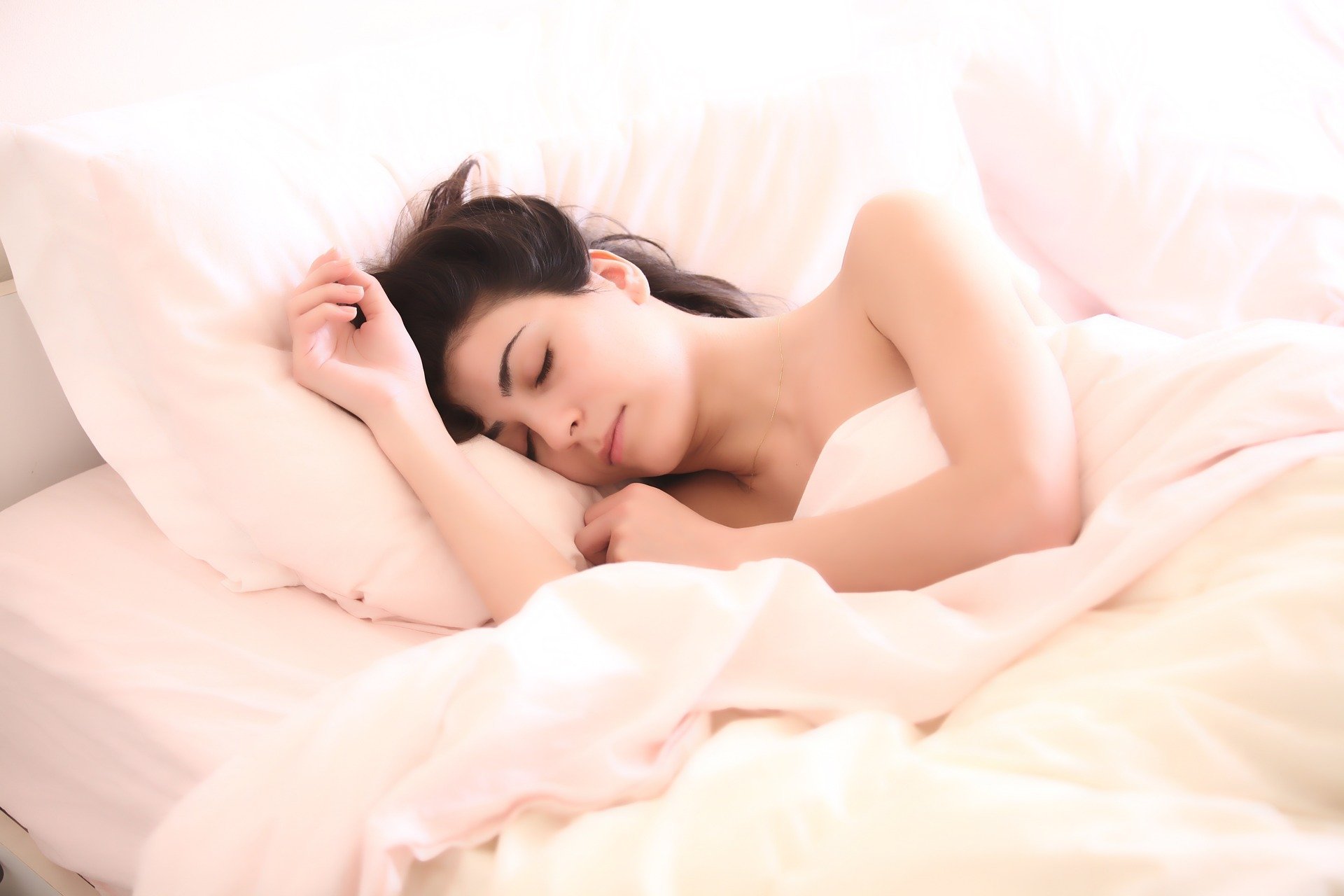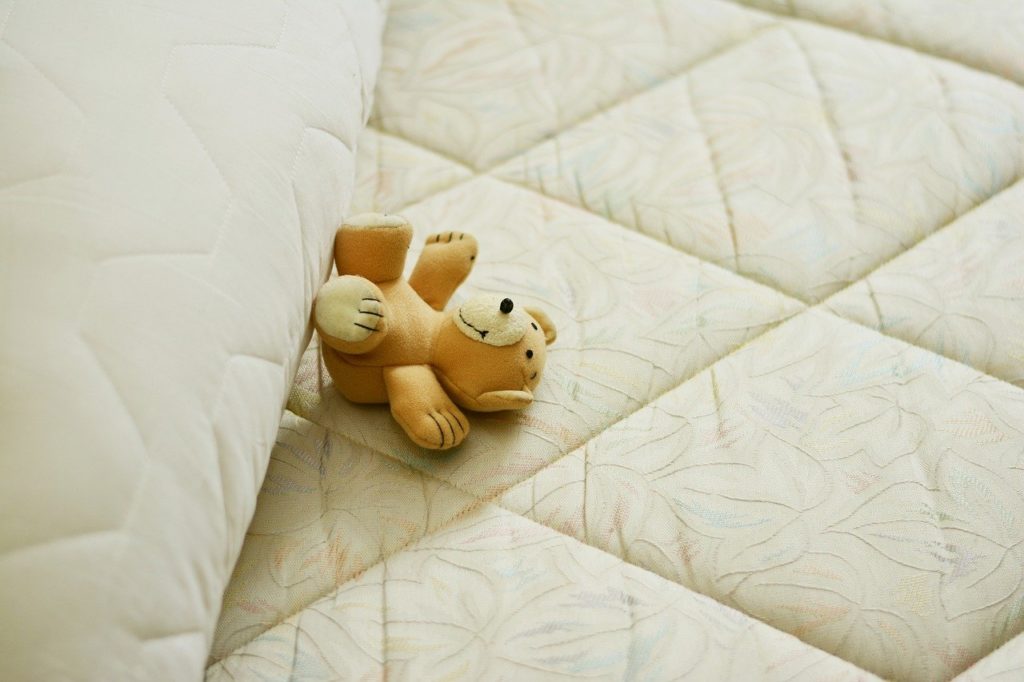Articles
Are Memory Foam Mattresses Safe?
Memory Foam mattresses’ popularity has soared in recent years. Their comfort proves second to none. Due to the manmade materials and chemicals that go in to making memory foam mattresses though, it is reasonable to ask if the synthetic materials are safe for human use.
Memory foam mattresses are safe as the level of any chemicals used is very low. Minor irritation or other health effects may occur if higher levels of these chemicals are present, but the production of mattresses has come a long way and the dangerous chemicals used previously have been discontinued.
Table of Contents
What are the Health Risks of Memory Foam?
There are many things to consider when purchasing a memory foam mattress and safety is a top priority. Today, we will dig deeper into the risks and benefits of memory foam mattresses to help you sleep a little bit better.
How toxic are memory foam mattresses?
The US Environmental Protection Agency (EPA) has declared that memory foam mattresses are safe. The effects of chemical exposure can be different for everyone, particularly depending on a person’s health status, but the levels of chemicals released by memory foam mattresses are negligible and even decrease over time, thus posing minimal risks to most users.
Most memory foam mattress users never experience any symptoms, but a small number of people have claimed to develop headaches or respiratory issues over time from this low dosage of chemicals.
Are memory foam mattresses safe to sleep on?
In spite of these chemical components, memory foam mattresses are safe to sleep on. However, when you first purchase your brand new memory foam mattress, you might notice the chemical smell called “off-gassing.” This is caused by volatile organic compounds (VOCs) which can be found in most products made from polyurethane foam or plastic.
The level of gasses are not harmful, but they are usually noticeable and many people find them to be unpleasant. They can also prove to be irritating if you are sensitive to these compounds. According to the EPA, although we are likely to breathe in these gases while we sleep, the level of gases in memory foam mattresses are very minimal and do not pose a significant risk to the user.

One way to avoid breathing in these chemicals, is to air out the mattress for up to three days before you start using it regularly. You can do this by storing it outdoors after unpackaging; or, if you keep it indoors, keep doors and windows open or use a fan to enable sufficient air flow.
Thankfully, some companies are now transitioning from VOC-emitting materials to plant-based materials as part of an eco friendly manufacturing process, reducing the chance of off-gassing from your new mattress.
There are a collection of certifying bodies that oversee the levels of toxins in mattresses such as CertiPUR-US®, Oeko-Tex, and the Global Organic Textile Standard (GOTS). They test the durability, emissions, material content, and performance of foams and fabrics in furniture and mattresses to ensure safety and conformity for the consumer. So be sure to watch out for these certificates to find out more about the component chemical levels when researching for your perfect memory foam mattress.
Chemicals and symptoms
Memory foam mattresses can contain toxic chemicals such as formaldehyde, benzene, naphthalene, or substances known as isocyanates. While these chemicals may invoke fear in some people, they are actually components of many consumer goods and are generally not present at levels where they can cause any serious issues. In high volumes or at sufficient levels of exposure, these chemicals can cause irritation of the eyes, nose, throat, and skin.
In compliance with consumer watchdog regulations to ensure the safety of home furnishings, memory foam mattresses, as well as other mattresses and furniture, are also known to contain chemical flame retardants. These have been linked to health issues such as cancer, obesity, or neurologic disorders, though these side effects are extremely rare and there should not be sufficient quantities of these chemicals in the mattresses to pose any substantial risk unless you have a known hypersensitivity to them.
What is memory foam made from?
Memory foam is made of a polymer called polyurethane, a petroleum-based plastic material. The polyurethane is mixed with other chemicals to increase its viscoelasticity and density.

The end product memory foam is used broadly in pillows, mattresses, mattress toppers, children’s car seats, sofas, and many more consumer goods. These kinds of mattresses tend to have a longer lifespan than other mattresses due to the inherent durability and other characteristics of the component materials.
Polyurethane, like many other synthetic materials, gives off chemicals in the form of gas into the air.
What are the Health Benefits of Memory Foam?
Despite the rare potential health risks of memory foam, there are many advantages to these modern wonders of technology and material science. First and foremost, the health benefits of a decent night’s sleep are innumerable.
Let’s probe a bit deeper into these pros:
Comfort and relief
Viscoelasticity is a characteristic of memory foam that enables the foam to reform back to its original shape over time. What this means is that memory foam has the ability to use your heat and body pressure to conform to your shape, cradling you while still maintaining a level of support. This is the meaning of “visco” in the term viscoelastic. Your body heat softens the memory foam, making it more viscous. It perfectly adapts to each individual and balances out the pressure, enabling the cushioning and support your whole body needs. For this reason, memory foam has been known to relieve soreness, body aches and pains, and stress as well.
Due to the balancing of pressure, memory foam mattresses are especially good for light sleepers as you are less likely to notice or be awakened by your partner moving. As you lie down, any movement is essentially absorbed by the mattress rather than transferred, which would happen in a traditional spring or foam mattress.
The density also reduces the amount of allergens that can penetrate and build up over time, giving the memory foam mattresses hypoallergenic qualities. This is particularly good for people with allergies who may otherwise struggle to sleep or wake up with skin or other irritations due to the myriad allergens that accumulate in traditional pillows and mattresses.
How do I choose a memory foam mattress?
There are 3 primary types of memory foam mattresses; traditional, open cell, and gel-infused. Your decision between the three might be swayed by both climate and price.
Traditional memory foam tends to be the cheapest option but is not recommended for hot climates as it tends to retain body heat. Open cell memory foam allows for better air flow through the mattress, helping to regulate body temperature and provide a more comfortable sleep environment.
Gel-infused memory foam mattresses have 2 types of gel infused into the mattress that absorb and release heat in response to body temperature and surrounding temperature, regulating the temperature in the bed and providing optimal comfort for the user relative to their environment. Mixing these materials and choosing the most effective combination for a given climate, sleeper, and level of comfort provides for the best sleep hygiene.
Are memory foam mattresses safe for children?
Memory foam mattresses are generally safe for older children and teens but not recommended for infants and toddlers. The body-contouring effect of memory foam that is loved by many adults is actually a very serious potential risk to young children.
Studies suggest young infants and even kids up to their pre-teen years should sleep on a very firm surface since they may not have the strength or coordination to be able to turn themselves easily during the night on a soft mattress. This can present a major suffocation hazard for young children and, for that reason, they should be avoided in these age groups. In addition, young children playing on a memory foam mattress can face this same risk and so should also be carefully watched in any home where memory foam mattresses are used.
Another concern for young children may be the chemical off-gassing which is likely to be more harmful to children. Plant-based, eco-friendly options are available or the use of a waterproof mattress topper can significantly reduce off-gassing and even allergens. This can also extend the life of their mattress and make accident clean up much easier.

